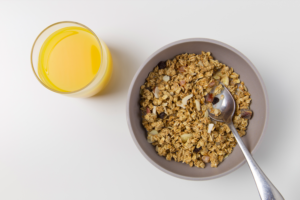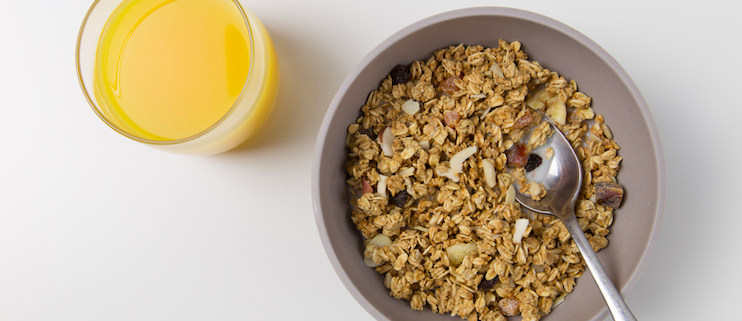Focus on Fiber This Month
 January is Fiber Focus Month and as the New Year kicks off, now is the perfect time to learn more about fiber and how to incorporate more fiber into your everyday meals.
January is Fiber Focus Month and as the New Year kicks off, now is the perfect time to learn more about fiber and how to incorporate more fiber into your everyday meals.
You probably have heard of fiber but are wondering why you need it. Fiber is a form of carbohydrate that adds bulk and texture to foods. It is a substance that does not get broken down into digestible sugars like other carbohydrates, instead, it passes through your digestive system relatively intact.
It is recommended that men age 50 years of age or younger get 38 grams of fiber daily, and women 25 grams daily. For those over 50 years of age, the goal for me in 30 grams and women 21 grams daily. There are two main types of fiber, soluble and insoluble fiber:
Soluble fiber attracts water in your gut, and aids in softening your stools and slowing down digestion which supports regular bowel movements.
Best sources: black beans, lima beans, peas, Brussel sprouts, oats, barley
Insoluble fiber does not dissolve in water but instead adds bulk to your stools to aid your gastrointestinal tract (GI) in the transportation of food.
Best sources: wheat bran, whole wheat, nuts, potatoes, carrots, squash, fruits with skin
4 Benefits of Dietary Fiber
Fiber is a key part of a well-balanced diet and provides an enormous number of nutritional benefits. It’s important to incorporate adequate amounts of both soluble and insoluble fiber to reap all its benefits.
- Bowel health: Gut health is extremely important; by bulking up on fiber, you can minimize discomfort by having smoother stools and prevent GI complications such as blockages that cause constipation and other digestive issues.
- Satiety: Fiber helps you feel fuller longer! Incorporating fiber throughout the day allows you to have more satisfying meals that will keep you energized.
- Blood sugar lowering: Fiber has been shown to help control blood sugar levels. Soluble fiber can improve blood sugar levels by slowing the absorption of carbohydrates.
- Cholesterol-lowering: Soluble fiber may help lower cholesterol levels by reducing the amount absorbed during digestion.
Tips to Add More Fiber Every Day
With all the nutritional benefits fiber has to offer, it is important to find ways to incorporate fiber into everyday meals. Look below for unique ways to add more fiber to every meal!
Breakfast: Add fiber to your breakfast by enjoying whole-grain toast or oatmeal. You can also add chia or flax seeds into yogurt or make a smoothie with fresh fruits and vegetables.
Lunch: Try sandwiches with whole-grain or sprouted bread, lentil soup, a quinoa or brown rice bowl, or even flax seeds as a topping to your favorite salads.
Dinner: Eat brown rice or barley for your grain side at dinner, whole-wheat or high-fiber pasta instead of white flour pasta, and include a variety of vegetables on your plate.
Snack: Air-popped popcorn is a great source of fiber. If baking, try adding in chia or flax seeds to cookies or cakes, use dried fruit, or nuts as a topping on your favorite dessert.
Fiber is the focus this month but it’s important to remember to add in fiber every day to maintain a healthy diet. There are so many great ways to increase your intake, try a new fiber dish this month!
Your Turn to Take Action: How have you incorporated fiber into your meals? Let me know in the comments below.


Leave a Reply
Want to join the discussion?Feel free to contribute!